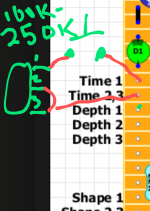Hi all, first post here! I tried my best to research this question (checked Tagboard Effects, Free Stomp Boxes, Reddit, etc.) but I haven't come across any resources that have fully cleared up my confusion on this.
Tl;dr is: I'm hoping someone can help me learn how to add a momentary switch to a delay pedal so that I can immediately shorten the delay time to create a pitch shift effect.
Full story time: The inspiration for this idea is twofold. First, I came across this video some number of years ago:
Ever since seeing this video, I have been DESPERATE to learn how to create a similar delay pedal featured on this guy's board because I LOVE the momentary switch that creates the pitch shift effect. The second bit of inspiration for this is, of course, the DOD Rubberneck. (The crazy thing is I already own the Rubberneck, but of course I won't be satisfied til I learn how to build this thing.)
My best (and very uneducated) guess is that I could send a wire from lug 1 of the Delay/Time potentiometer to lug 1 of an SPST switch and then connect lug 2 of the SPST to lug 3 of the Delay/Time potentiometer. Maybe a trimpot goes somewhere in the middle?
Any advice would be super appreciated—thank you!
Tl;dr is: I'm hoping someone can help me learn how to add a momentary switch to a delay pedal so that I can immediately shorten the delay time to create a pitch shift effect.
Full story time: The inspiration for this idea is twofold. First, I came across this video some number of years ago:
Ever since seeing this video, I have been DESPERATE to learn how to create a similar delay pedal featured on this guy's board because I LOVE the momentary switch that creates the pitch shift effect. The second bit of inspiration for this is, of course, the DOD Rubberneck. (The crazy thing is I already own the Rubberneck, but of course I won't be satisfied til I learn how to build this thing.)
My best (and very uneducated) guess is that I could send a wire from lug 1 of the Delay/Time potentiometer to lug 1 of an SPST switch and then connect lug 2 of the SPST to lug 3 of the Delay/Time potentiometer. Maybe a trimpot goes somewhere in the middle?
Any advice would be super appreciated—thank you!


